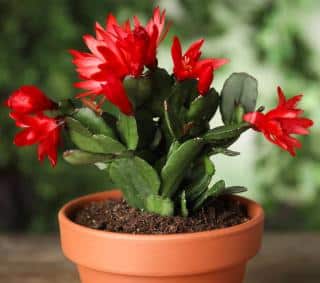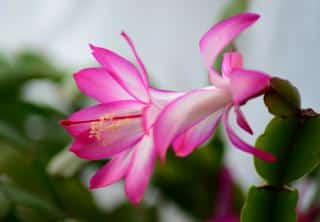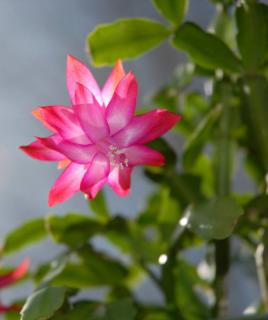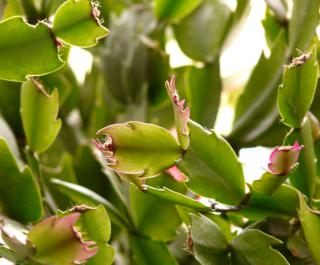

Schlumbergera, also called Christmas cactus, is a cute succulent plant that blooms in fall or winter.
Summary of Schlumbergera facts
Name – Schlumbergera
Family – Cactaceae
Type – indoor plant
Height – 10 to 12 inches (25 to 30 cm) indoors
Exposure – Very well-lit
Soil – soil mix
Foliage – evergreen – Flowering – Autumn/Winter
Not hardy at all, it is usually grown in our latitudes as an indoor plant.
Schlumbergera, or Christmas cactus, is traditionally grown in pots or garden boxes in temperate latitudes because it doesn’t resist temperatures colder than 50°F (10°C).
Once purchased, you won’t need to repot it immediately, but it will do good to change the pot after the blooming.

If growing schlumbergera in the open ground, know that this is only possible in areas with very mild winters because this plant is native to the tropical regions of South America.
Schlumbergera or Christmas cactus is propagated through cuttings after the blooming.
Schlumbergera or Christmas cactus is quite easy but here are the tips that will help you make it last.

In summer, it’s possible to place your schlumbergera outdoors, in a shaded and sheltered spot of your terrace, deck or garden.
Watering is on a regular but moderate basis during the growth and/or blooming season.
To keep your schlumbergera from one year to the next, it is advised to repot it after the blooming, at least every 2 or 3 years.
For the foliage to stay dense and the bearing compact, it’s possible to pinch stems after blooming.

It’s called Christmas cactus because it usually blooms in December, even if today, marketing pressure makes them bloom as early as fall.
Schlumbergera is also an air purifying indoor plant.
Lastly, the true specific Christmas cactus is Schlumbergera x buckleyi but there are now 6 commonly available schlumbergera species.
The blooming seasons are somewhat staged, but not the color of the flowers which always are shades of pink. That’s where the difference between “Christmas cactus”, “Thanksgiving cactus” and “Easter cactus” comes from!
 Schlumbergera kautskyi
Schlumbergera kautskyiIf the leaves of your Schlumbergera are falling off, this may be because it was moved to another place, drafty air, or an issue with the watering.